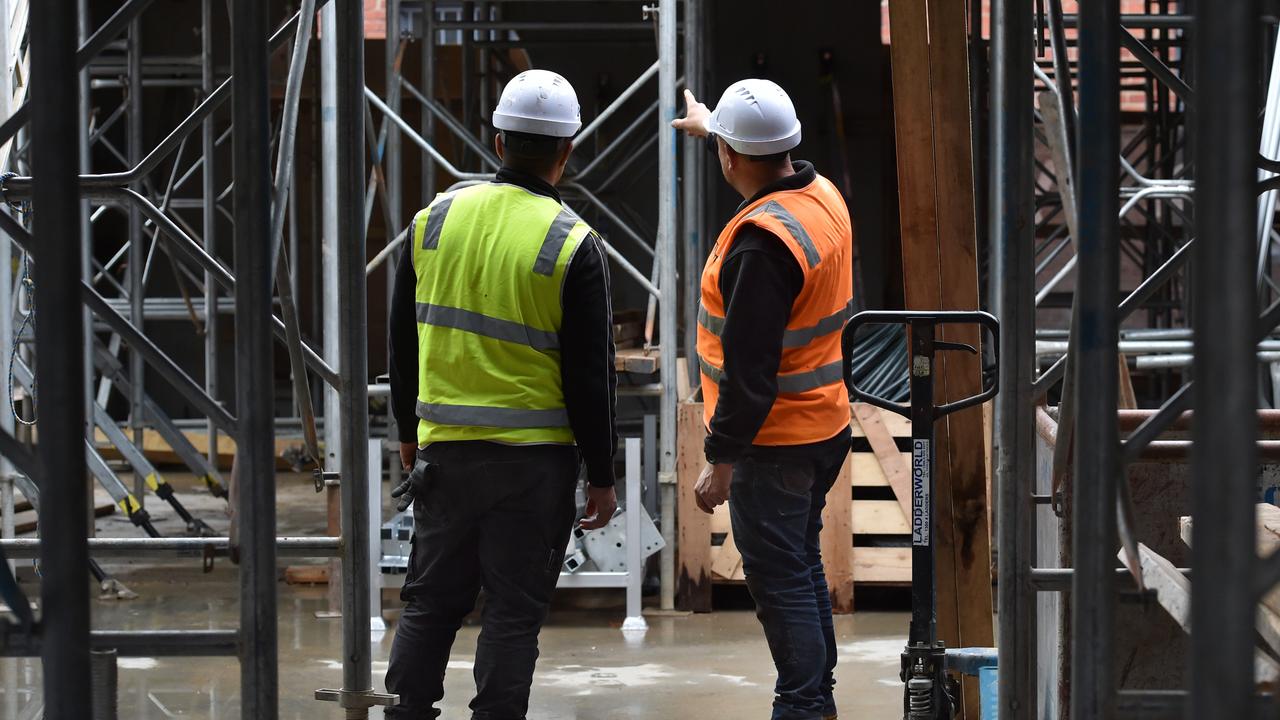
A sharp rise in the number of people in search for work caused the unemployment rate to return to a two-year high last month, adding to evidence of a deterioration in the labour market and stoking the case for rate cuts this year.
Even as Australian employers added 38,500 jobs in April, the number of people classified as unemployed jumped by 30,000 due to still high migration, the decision of those previously on the sidelines of the jobs market to now look for work, and more people indicating that they had a job but were waiting to start.
As a result, the unemployment rate jumped to 4.1 per cent, the Australian Bureau of Statistics said on Wednesday.
That figure was higher than March’s reading of 3.9 per cent, when job losses exceeded 6000, and sharply higher than an increase to 3.9 per cent that economists were expecting.
The Reserve Bank is closely monitoring the jobs market for signs its 13 rate hikes to date are cooling the economy. Thursday’s labour force report will add to hopes that the RBA can move to cut rates sooner than expected, possibly before Christmas.
Traders responded by bolstering their rate cut bets, ascribing a near 50 per cent chance of a rate cut in December. Earlier this week, money markets ascribed a one in four chance of a lowering in interest rates by then.
Deutsche Bank chief economist Phil O’Donaghue said the figures showed “clear cracks” were beginning to emerge in the jobs market.
“A rising unemployment trend should be associated with a falling inflation trend,” Mr O’Donaghue said, pencilling in a rate cut for November.
“The first half of that equation increasingly looks to be in place now. Inflation data over coming months will show whether the second leg is holding up as well.”
A number of key indicators suggest the jobs market will loosen in the months ahead. Job ads are declining while the number of applicants for each advertised position has been lifting.
But with a larger-than-usual number of people being attached to a job they were waiting to start, Oxford Economics Australia’s Sean Langcake said next month’s reading would be buoyed as many started new roles.
“These workers will flow into employment next month, putting some downward pressure on the unemployment rate,” he said.
RBA governor Michele Bullock has previously warned that labour hoarding, the phenomenon where businesses choose not to adjust their headcount despite fluctuations in the economy, was potentially helping to hold the jobless rate lower.
“Businesses don’t want to lay people off just yet because they’re worried they will get caught like they got caught 18 months ago, laid off people and then had to try to rehire them and they couldn’t,” she said earlier this month.
In April the 38,500 rise in employment was driven by a surge in the number of part-time jobs, up 44,600, however this figure was slightly offset by a fall in full-time roles, down 6,100.
Meanwhile, the participation rate – the share of the working aged population in work or looking for work – climbed to 66.7 per cent in April, up from 66.6 per cent in March.
About 38,000 new jobs need to be created every month to keep the unemployment rate stable, assuming the participation rate remains unchanged.
Welcoming the figures, Treasurer Jim Chalmers said the government was still presiding over employment growth as the jobless rate climbed.
“It’s a remarkable fact that amidst all the uncertainty the Albanese Labor government has still overseen the creation of 820,000 new jobs, by far the most of any first-term government,” Dr Chalmers said.
But shadow treasurer Angus Taylor said the rise in unemployment was indicative of challenging economic conditions buffeting households.
“Australians’ standard of living has been smashed under Labor’s economic mismanagement. Unfortunately, the budget this week has proven the government has no plans to restore it,” Mr Taylor said.
According to forecasts released in Tuesday’s budget, Treasury expects the unemployment rate to climb to 4.5 per cent by mid-2025.
https://news.google.com/rss/articles/CBMipQFodHRwczovL3d3dy5uZXdzLmNvbS5hdS9maW5hbmNlL2Vjb25vbXkvYXVzdHJhbGlhbi1lY29ub215L3JlZC1ob3Qtam9icy1tYXJrZXQtZWFzZXMtYXMtdW5lbXBsb3ltZW50LWp1bXBzLXRvLTQxLXBlci1jZW50L25ld3Mtc3RvcnkvMDQ0OGUyMzFkY2VmMzNhZDkwYzlhYzA5OTdkNDQ3OTDSAakBaHR0cHM6Ly93d3cubmV3cy5jb20uYXUvZmluYW5jZS9lY29ub215L2F1c3RyYWxpYW4tZWNvbm9teS9yZWQtaG90LWpvYnMtbWFya2V0LWVhc2VzLWFzLXVuZW1wbG95bWVudC1qdW1wcy10by00MS1wZXItY2VudC9uZXdzLXN0b3J5LzA0NDhlMjMxZGNlZjMzYWQ5MGM5YWMwOTk3ZDQ0NzkwP2FtcA?oc=5
2024-05-16 02:02:35Z
CBMipQFodHRwczovL3d3dy5uZXdzLmNvbS5hdS9maW5hbmNlL2Vjb25vbXkvYXVzdHJhbGlhbi1lY29ub215L3JlZC1ob3Qtam9icy1tYXJrZXQtZWFzZXMtYXMtdW5lbXBsb3ltZW50LWp1bXBzLXRvLTQxLXBlci1jZW50L25ld3Mtc3RvcnkvMDQ0OGUyMzFkY2VmMzNhZDkwYzlhYzA5OTdkNDQ3OTDSAakBaHR0cHM6Ly93d3cubmV3cy5jb20uYXUvZmluYW5jZS9lY29ub215L2F1c3RyYWxpYW4tZWNvbm9teS9yZWQtaG90LWpvYnMtbWFya2V0LWVhc2VzLWFzLXVuZW1wbG95bWVudC1qdW1wcy10by00MS1wZXItY2VudC9uZXdzLXN0b3J5LzA0NDhlMjMxZGNlZjMzYWQ5MGM5YWMwOTk3ZDQ0NzkwP2FtcA
Bagikan Berita Ini














0 Response to "Fresh sign of interest rate cut - news.com.au"
Post a Comment